日東醸造│Nitto
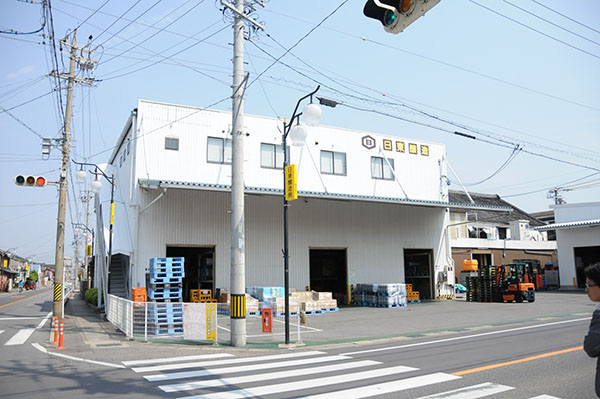
白醤油の原点を追求する
「昔の白は違ったような気がする」そんな先代の一言から、白醤油の追求がはじまりました。仕込み方を試行錯誤して、良質な水を探して、そして、本社工場から遠く離れた地に蔵を構えることに・・・
Pursuing the origins of white soy sauce
“The white soy sauce used to be different.” From these words, Nitto Brewery was inspired to create white soy sauce. Undergoing trial and error, looking for good quality water, and setting up a brewery far from the head office factory–this is how Nitto Brewery did it all.
「昔ながら」と「時代の先端」
日東醸造の本社工場の衛生管理に驚きました。白衣着用はもちろんのこと、念入りな手洗いから粘着テープのローラーがけまで細部にわたって徹底されています。一般的な醤油工場の基準からするとかなりの最先端です。
“Old−fashioned” and “State−of−the−art”
When I visited the head office factory of Nitto Brewery, I was surprised by the strict sanitary control. Everyone wore a white work uniform, and had to adhere to stringent procedures such as thorough hand washing or how to use the adhesive tape properly. It is considered a cutting−edge brewery, compared to the standard soy sauce factory.
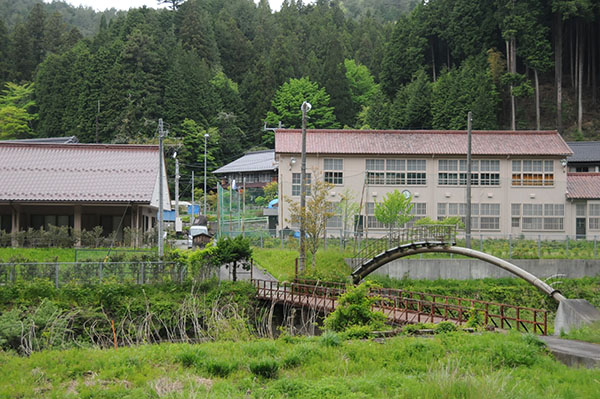
本社工場から車で90分の場所にある足助仕込み蔵
一方で、地元の方が「愛知の北海道だ。」と表現するくらい、夏でもエアコンいらずの山里があります。ここが日東醸造の「足助仕込蔵」。ただ、外観は小学校。これまた珍しいと驚いていると、蜷川社長が経緯を説明してくれました。「最初は水を探していたんです・・・」
・・・話は平成の最初の頃に遡ります。
Nitto Asuke Brewery is 90 minutes from the head office factory
Many locals refer to this area as the “Hokkaido of Aichi,” where the mountains act as a natural air−conditioner in the summertime. Tucked beneath these mountains is an old elementary school, where the white soy sauce factory, Nitto Asuke Brewery, is. Yoichi Ninagawa admits that the brewery location is a bit unusual, and explains that he was initially looking for a clean water source.
And the story of the brewery dates back to the beginning of the Heisei Period (1989−present).
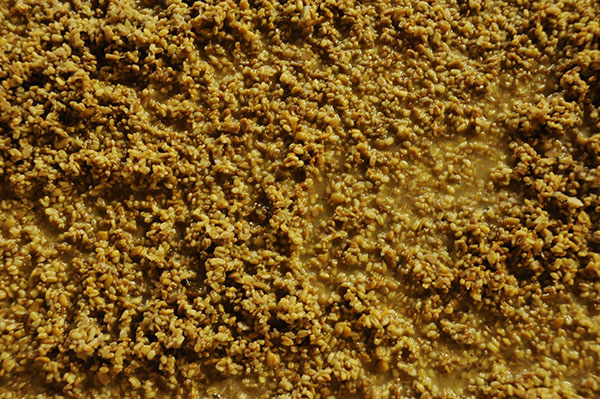
「昔の白は違ったような気がする・・・」
きっかけは先代のこんな一言。明確に何が違うというわけではなかったそうです。製法なのか原料なのか、先代のわずかな記憶を頼りに昔の白醤油探しがはじまったそうです。
麹と仕込水の割合を、通常の1:2から1:1に変えてみる。すると収量は少なくなるものの、しっかりした味になる。ただ、白醤油の特徴である淡い琥珀色が濃くなってしまう・・・これではだめだ。
色が濃くなる要因の一つは原料の大豆。では、大豆を一切使わないようにしよう・・・そんな試行錯誤を繰り返す中、良い水を求めるのは当然の流れだったそうです。
“I feel like white soy sauce used to taste different…”
This remark–uttered by one of the brewery’s predecessors–is what started it all. But it was not clear on what was different about the white soy sauce now. Could it be the production method? Or is it a change in raw materials? The search for genuine white soy sauce began with a slight memory from the previous generation.
At first, the brewery tried changing the ratio of koji (naturally−occurring mold) and water from the standard 1:2, to 1:1. Although the production yield decreased, it had the taste that resembled white soy sauce. However, the pale amber color—which is the characteristic of white soy sauce—was not apparent, and the consistency of this batch was thicker than usual. Therefore, it was considered useless.
One of the primary factors that cause soy sauce to have a dark color is raw soybeans. So Nitto Brewery initially didn’t use any soybeans at all. However, throughout the process of trial and error, they came to the natural realization that water–and particularly a source of water–would be key.
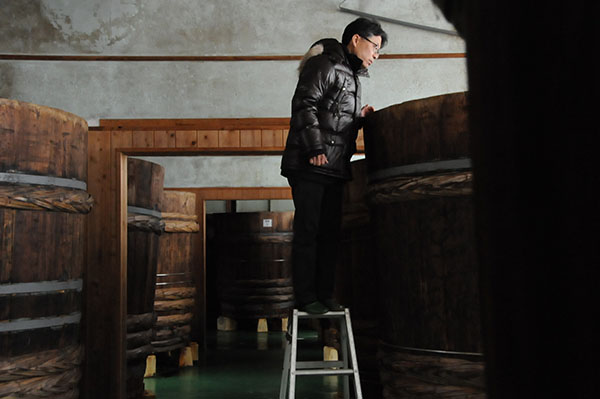
一目惚れから方向転換
「いつも頭の中は水だったのです。」人に会っても質問するのは水、水、水。するとある町の助役さんから「あるよ!」という思いがけない回答。早速、現地に同行させていただくと行く手は深い山道に。
「本当にこの先に町はあるのか?」不安を抱えつつ車を走らせると、頂上を過ぎて少しのところに集落を一望できるポイントがあります。「この風景にやられてしまいました。この地で醤油をつくりたいと思ってしまったのです!(笑)」
Love at first sight leads to a change of course
“In my head, I always thought about water,” said Ninagawa. He traveled all over Hekinan, asking people where he could find good quality water for his soy sauce. One day, Ninagawa asked an assistant from Hekinan, and they unexpectedly said, “I know a place!” They can accompany you to the source, but they must go through a path deep in the mountains.
“Is there really a town here?” said Ninagawa anxiously, as they were driving through the mountains. After some time, they saw a small village past the summit. Jokingly, Ninagawa says, “I was struck by the landscape and fell in love. I knew I wanted to make soy sauce in this area.”
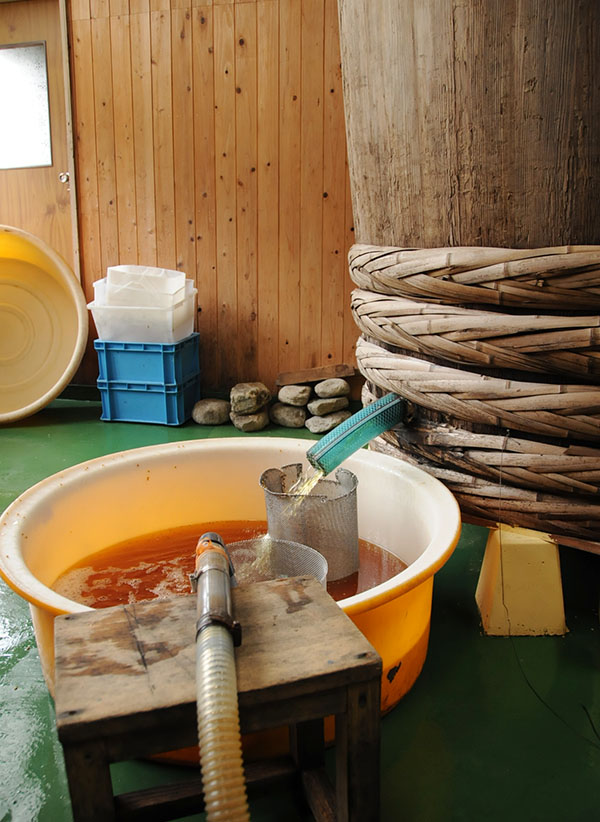
絶対に怪しい!からのスタート。
当初の考えだった「水を本社工場に運ぶ」ことから一転、この地で醤油をつくることに。ちょうど、廃校となった小学校の建物を借りられることになりそう・・・だったのですが、地元の方にご理解いただけるまでに2年くらいはかかったそうです。
車で90分も離れた会社がこの地で醤油工場をつくる。地元の方からすれば「なぜ?」となるのは当然のことだと思います。「むしろ、絶対に怪しい!となっていたと思います。(笑)」と蜷川社長は当時を思い返して笑顔に。
何度話し合いをしても進まず、マイクロバスで本社工場の見学に来ていただくことにしたそうです。すると、「本当に醤油をつくってる!(笑)」となり、話は進み始めました。
A suspicious start
Originally, Ninagawa thought about transporting the water back to head office factory. But after seeing the beauty of this small mountainous village, he wanted to make soy sauce here. He thought it would be possible to borrow the retired elementary school, but it proved to be much more challenging than he thought. It took the local people two years to understand what he was doing, and why he wanted to use the building.
To the local people’s perspective, a soy sauce brewery that is 90 minutes away from the head office factory seemed unusual, and they doubted whether his intentions were true. So it is understandable for them to question Ninagawa’s plan. Laughing as he remembers that time, he says, “They definitely thought I was suspicious!”
After discussing numerous times without much progress, he invited the local people to visit the head office factory. When the locals saw the factory, they said, “He really is making soy sauce!” and then the journey for white soy sauce began.
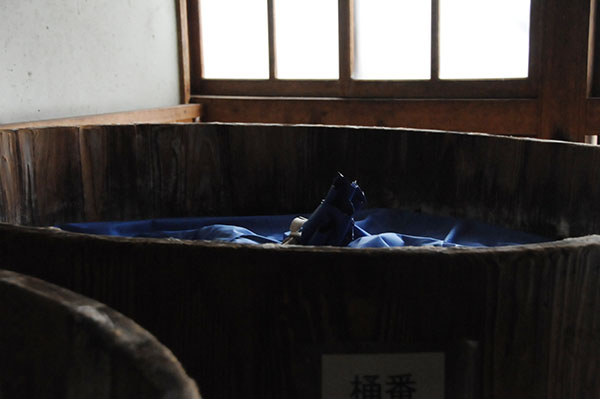
「しろたまり」は醤油ではないんです。
醤油の定義の一つに大豆を使っていることという項目があります。一般的な白醤油は少量の大豆を使っているので醤油と名乗ることはできます。ただ、前述のようにこの「しろたまり」は大豆を一粒も使っていません。そのため醤油と名乗ることができないのです。
白醤油を追求した結果、醤油と名乗れなくなってしまう。「当時は驚きましたがルールには従わなくてはいけない。大量に仕込む中に1粒だけ大豆を忍び込ませるなんてこともできなくはないですが、そこは正直にいこうよということで、小麦醸造調味料と名乗っています。」
“Shiro tamari” is not soy sauce
By definition, soy sauce is made from soybeans. Some white soy sauce today uses a small amount of soybeans, so that is why it can still be called “soy sauce.” However, this shiro tamari, or white liquid run−off, does not use a single soybean. Therefore, it cannot genuinely be called “soy sauce.”
During the pursuit of genuine white soy sauce, Ninagawa realized he cannot call it ‘soy sauce,’ “I was surprised at the time, but I have to obey the rules. Technically I could add just one soybean to the batch in order to call it soy sauce, but that would be dishonest. For that reason, I call it ‘wheat-distilled seasoning’ instead.”
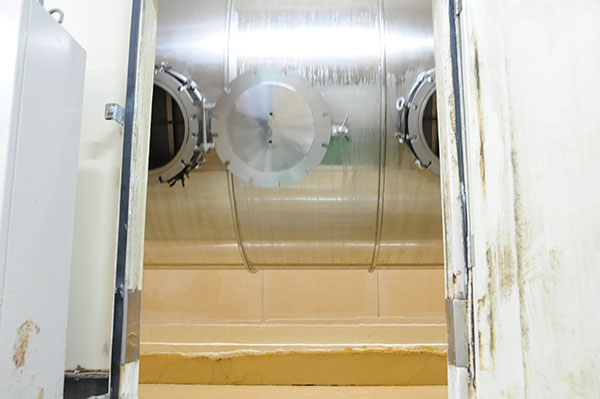
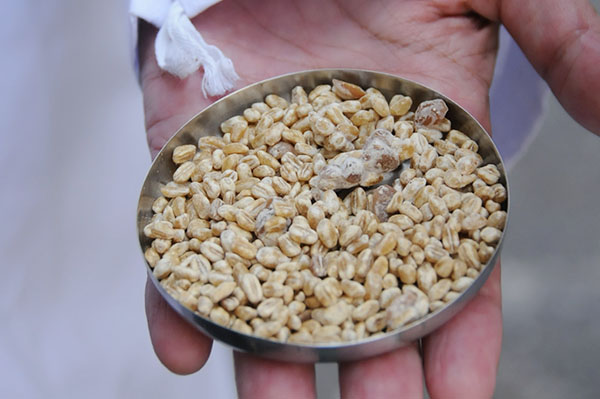
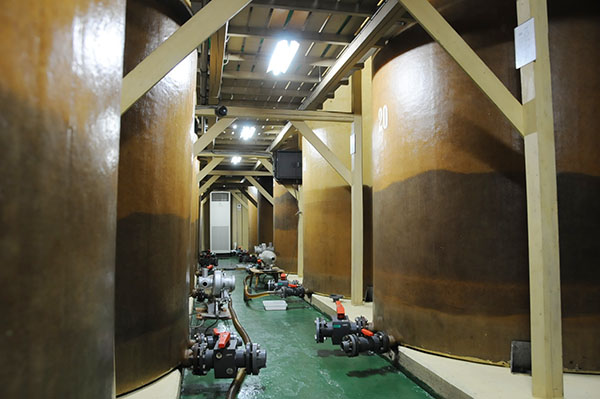
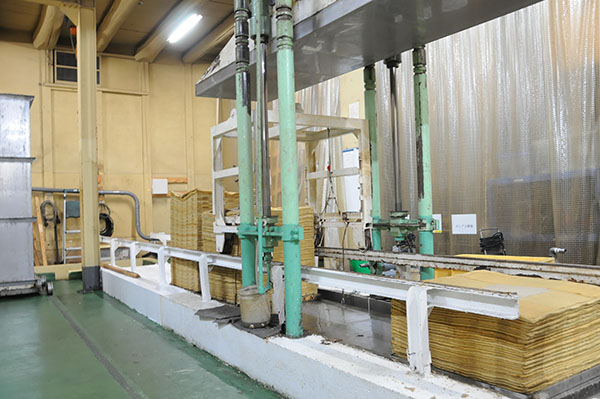
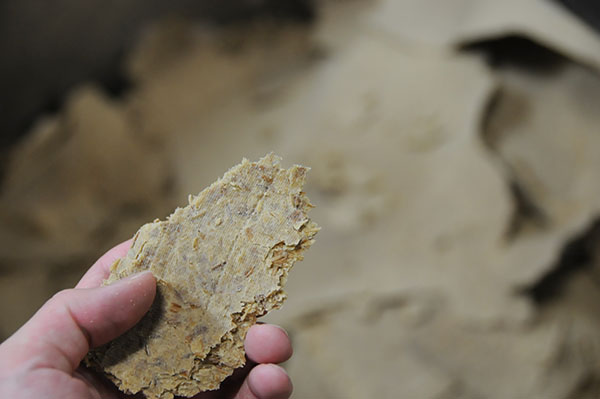
ご近所さんが営業マン?!
足助仕込蔵の見学を終えて、ご近所さんに挨拶すると少し寄っていきなということで、こたつを一緒に囲ませていただきました。最初は反対をしていたという当時の様子を伺おうとすると、「今は日東醸造が誇りなんよ。もっと多くの人に知らせたい。あなたは醤油を売っているんだろ?だったら、日東醸造を世界に紹介してくれよ!」
いつの間にか、ご近所さんが日東醸造の営業マン状態に。そしてトークはどんどん熱を帯びていきます。恥ずかしさのピークに達したように蜷川社長が「そろそろ・・・」と口にするも、一切お構いなしに日東醸造自慢をし続けていただきました。
Your neighbor is the salesperson?!
One day, after finishing a tour at Nitto Asuke Brewery, one of Ninagawa’s neighbors called him over. He appeared displeased, but then he began to speak of Nitto Asuke Brewery with pride. “I want to tell more people about it,” he declared. “You sell the soy sauce, don’t you? I’ll introduce it to the world for you!”
The neighbor continued talking animatedly, as if she was a salesperson of Nitto Brewery. Ninagawa was a feeling a bit embarrassed by the whole ordeal, and wanted to excuse himself by saying, “It is almost time…” However, the neighbor continued praising Nitto Brewery anyways.
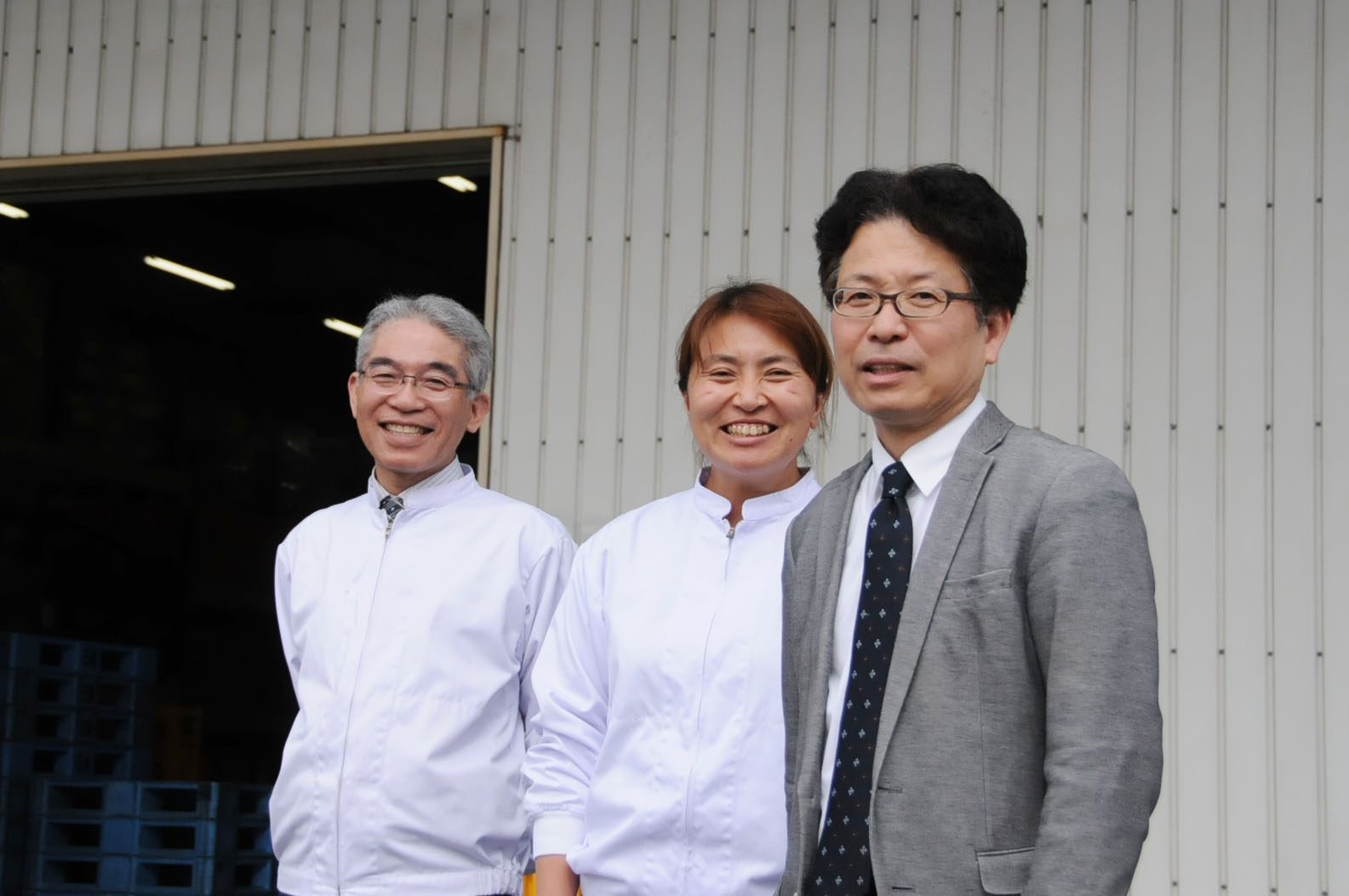
電話をかけたときにスマートな対応ぶりは醤油業界トップクラスだと思います。そして、いつお伺いしても皆さん笑顔で、スタッフの方同士がとにかく仲良し。そんなところも日東醸造の魅力の一つだと感じています。
I think it is safe to say that this brewery is one of the best in the soy sauce industry. Whenever you visit, everyone has a smile, and the staff is also get along well. Even over the phone, the brewery’s customer service is top notch. I believe that is one of the best attributes of Nitto Brewery.

昔の白醤油を追求したこだわり
価格 : 381円+税
原材料 : 小麦、食塩、焼酎
